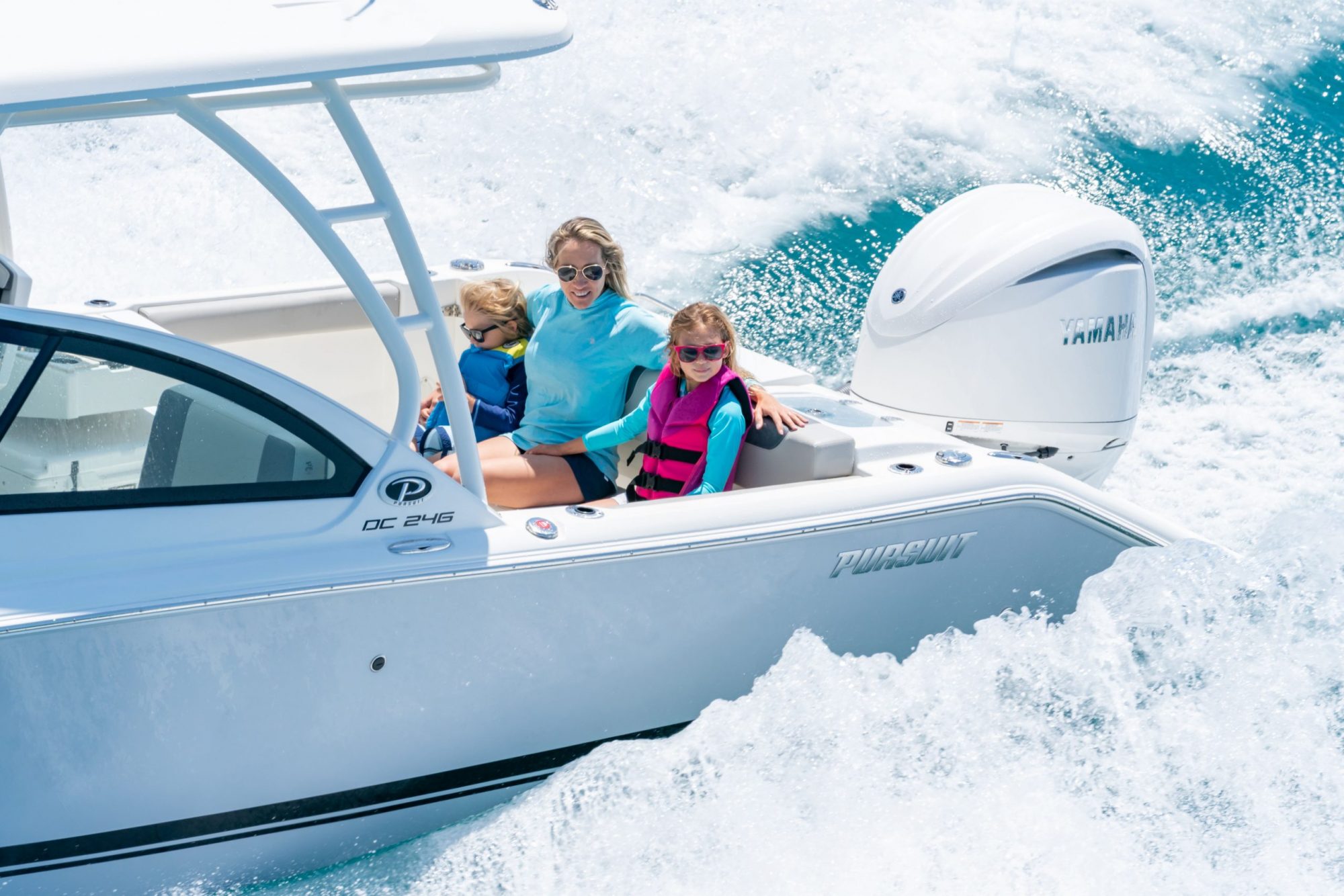The 5 Important Questions about Boat Loans from Boattest.com

The following article is courtesy of Boattest.com and offers some helpful information when seeking to finance your boat purchase! Please contact a member of our team to learn more about financing options available to you.
For most consumers, all finance programs boil down to:
- The Down Payment Required
- The Amount that Can Be Financed
- The Interest Rate
- The Monthly Payment
- The Length of the Loan (Term)
Consumer Caveat: All boats and the financial profiles of all loan applicants are different, so there are always exceptions to the generalities being made in this report. Our purpose here is to give potential boat loan applicants the lay of the land and some bench marks for better understanding the process.
I. The Down Payment
The size of the down payment typically required for a new boat depends on:
1. The size of the loan
2. Whether the boat is new or used
3. Your financial profile
4. The amount of extras baked into the loan
New boats with a loan under $100,000, usually need to have at least 10% down. For a boat over a $100k or for pre-owned vessels, banks typically require 20% down on the boat.

A Larger Down Payment Pays Off
Of course, there is nothing prohibiting buyer from putting larger amounts down, which can reduce either the monthly payments or the interest rate. Borrowers with a shaky credit score might help their cause by advancing a larger down payment, which would lower the lender’s risk in case of a repo.
Finance the Extras. Typically, on a new boat the lenders will allow the inclusion of taxes and basic gear to about 110% cost of the boat.
II. The Amount that Can Be Financed
Virtually any amount can be financed, depending on the credit-worthiness of the applicant and the condition of the vessel. However, most boaters receive loans in the $50,000 to $250,000 range.
Loans under $50,000 are also available, down to about $25,000. Loans lower than that are not encouraged because the man-hours involved with the loan origination and the risk.
The higher the loan amount, the greater the risk to the lender, all other things being equal, so expect higher rates, unless your financial profile can mitigate risk for the loan institution.

III. The Interest Rate
A boat loan interest rate at any given time is based on the Federal Reserve’s bank interest rate for accounts held by eligible institutions at Reserve Banks. The lowest interest rates available will start about 200 basis points higher for the most credit-worthy applicants wanting a new boat in the bank’s “sweet spot.” At the opposite end of the spectrum, a loan for an old boat to be owned by a marginal credit risk might be as high as 19%.
Remember that the boat is the primary collateral for the loan, so whether it is new or used will affect both the interest rate and term. Factors that will affect your interest rate are:
1. Boat type (one-offs and character boats will cost more)
2. Year built (not more than 20 years old)
3. Your Credit Score (not lower than mid-600s)
4. Annual free cash flow (About 60% of your income.)
5. Net worth (Liquid net worth should be 1x to 2x the amount of the loan.)
6. Amount of the loan (Not more than 2.5x your gross income.)
Different Strokes for Different Folks
Different institutions have different appetites for boat loans and for loan risk at any given time. That is to say, some institutions are willing to make a risker loan than others, but for the compensation of a higher interest rate. On the other hand, some banks will only consider the best credit scores, and will offer a lower interest rate.
Further, most banks balance their loan portfolios among many different kinds of loans with different risk profiles, including home mortgages, car loans, appliance loans, and others.
At certain times a bank may “need” more boat loan “paper” of a certain type, and conversely, may be up to its limit on a certain risk profile of boat loans.
IV. The Monthly Payment
Both parties to a loan must be secure in the knowledge that the monthly boat loan amount can be comfortably paid. Your debt-to-income ratio – for ALL of your obligations – as a rule of thumb, should not exceed 40%.
To determine your monthly DTI (Debt to Income), simply take all of your monthly debts and obligations – house and car payments, utilities, child support, credit card payments, etc. – and total them. Then take your annual gross income and divide by 12. The result needs to be below 40%.

While each mortgage lender maintains its own criteria for affordability, your ability to purchase a boat (and the size and terms of the loan you will be offered) will always depend mainly on the following factors:
Income
Debt
Assets
Liabilities
A lender wants to know how much income an applicant makes, how many demands there are on that income, and the potential for both in the future—in short, anything that could jeopardize its ability to get paid back.
V. Term – Length of the Loan
This is pretty cut and dried, but like most anything to do with a boat loan, can be modified by a willing bank if it so chooses. Generally, loan terms are as follow—
$50,000 and above 20 Year Term Max
$49,999 to $25,000 15 Year Term Max
Under $25,000 10-12 Year Term Max